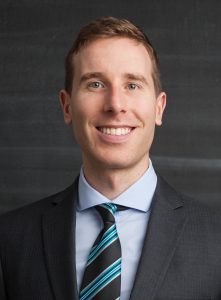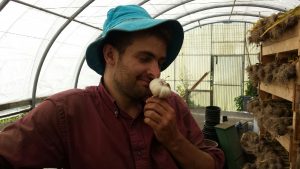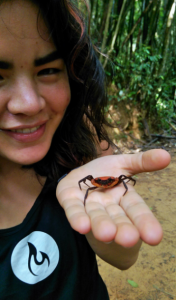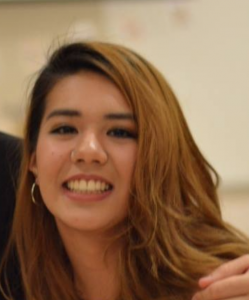Imagine your life as a series of decisions where you’re asked to choose awesome thing A or awesome thing B. Both have their strengths, but after an agonizing decision, no matter your choice, you only ever get to experience one of the two awesome things and will forever wonder what you missed out on. Now imagine a third option, a reframing of the paradigm, a fundamental re-writing of the “rules”: you choose BOTH. This is the kind of shift we envision for the City of Vancouver and its tree population.
Our city is well stocked with decorative trees in our parks, courtyards and along most roads. These trees provide value in many ways, from providing the shade to cool our city to producing oxygen and contributing to rain water management. These trees are usually chosen because their root structures and canopies fit well with city infrastructure. No threat to powerlines, no risk of damaging sidewalks or toppling over onto citizens. These are all great qualities, but we’ve chosen them at the expense of fruit production. Despite all the productive capacity in our city’s trees, none of them contribute to our food system.
Now imagine choosing both: you walk to a picnic in Stanley Park along an even, unbroken, well lit sidewalk. You unpack and realize you’ve forgotten the magic ingredient for your salad. You think to yourself, “no worries, I’ll just grab a pear off this tree.” Is this a realistic goal? Is this even possible in our city? We look forward to finding out.
The Team
 Evan Duxbury – A dietitian in training with an interest in sports, sustainability and marketing, Evan brings years of communications experience to the team and will lead the writing efforts.
Evan Duxbury – A dietitian in training with an interest in sports, sustainability and marketing, Evan brings years of communications experience to the team and will lead the writing efforts.

Michael Annejohn – A rising star in the world of plant & soil science with a knack for project management, Michael is looking forward to developing our strategic plan.

Marika van Reeuwyk – Another “budding” plant & soil scientist, Marika’s educational focus is on wildlife conservation, and gardening. Her skill with a camera will help the team capture key moments and achieve our communication goals.

Belle Wilaingam – From the Global Resource System department, Belle is our subject matter expert in the field of botany. Her interest in urban farming and governance structures will serve the team well.

Amy Zhang – An FNH major, Amy is passionate about nutrition and a healthy diet. Amy is a transdisciplinary thinker, and her ability to connect ideas across silos will be invaluable.
Group Interests
First among selection criteria for our group, was creativity. The freedom offered by this project gave us the opportunity to create something that interests us and achieve something that we ourselves defined as meaningful. In this case, we chose something that gives us the chance to advance what we perceive to be a relatively unexplored opportunity for food production and food justice in Vancouver’s food system. Allen (2008) highlights a need to bring food justice to the forefront in our community food systems. Raising the possibility of delivering free, local produce to communities via a controversial project, which is considered vandalism in some circles, could do just that.
Part of our excitement comes from the application of Asset Based Community Development to mobilize existing but unrecognized community assets (Mathie & Cunningham, 2003). Adding food production capacity to the thousand of established trees in our community could be a relatively low cost, immediate and high impact solution. We are also looking forward to the experience of engaging a community partner, an learning more about the science and methodology behind the grafting technique
By the end of this project, we hope to have an initial assessment of the feasibility of grafting from a multitude of perspectives, some hands-on grafting experience and a deeper understanding of Vancouver’s “big picture” food system.
Partner Objectives
The late-to-bloom nature of this project is that we don’t start with an assigned partner. We have identified several potential partners and hypothesized interests:
- Permaculture BC – Our project meets their criteria for sustainable regenerative human habitat. They may see our project as laying the groundwork for a future grafting related initiative of theirs.
- Vancouver Fruit Tree Project Society – Focused on picking backyard fruit and distributing it to those in need, the Society may see our project as an opportunity to increase the amount of local fruit produced.
- Tinka Orchard CSA – Already using grafting to hybridize trees, the Orchard may see our project as furthering its mission to connect communities with their food sources.
First Impressions
Thus far, the process has been surprisingly smooth. Our team reached a decision on a topic for our project on schedule and all of us seem to have found our roles fairly naturally. That said, we are painfully aware of the advantages that come with a pre-defined project and the work that will be required to catch up to other groups. The hastily-assembled feeling about this project led to some doubts about our ability to deliver value to a community member on the timeline that we have in mind.
Despite our concerns, we’re hopeful that our enthusiasm for this project will spread to our community partner and that we will be able to use their knowledge and experience to guide us forward. Given our relative inexperience with the subject, Ernest Sirolli’s strategy for listening to a community before taking action should come naturally.
References
Allen, P. (2008). Mining for justice in the food system: perceptions, practices, and possibilities. Agriculture and Human Values, 25(2), 157–161.
Mathie, A., & Cunningham, G. (2003). From clients to citizens: Asset-based community development as a strategy for community-driven development. Development in Practice, 13(5), 474-486. doi:10.1080/0961452032000125857
Sirioli, E. (2012). What to help someone? Shut up and listen! TED Talk Presentation.